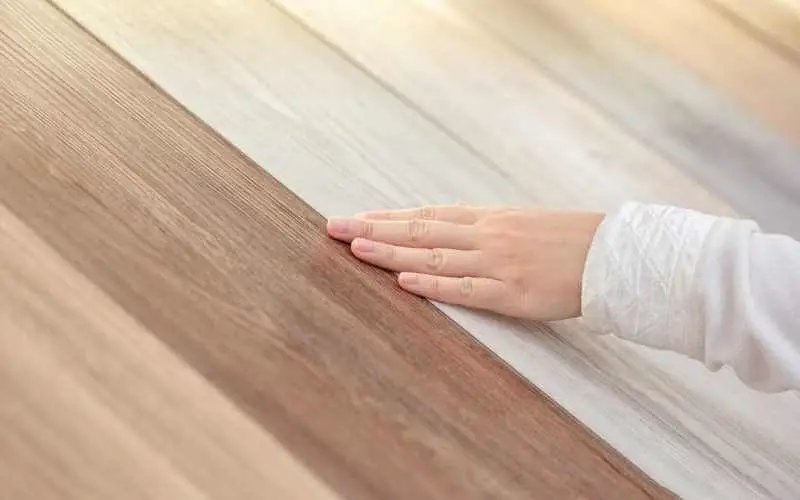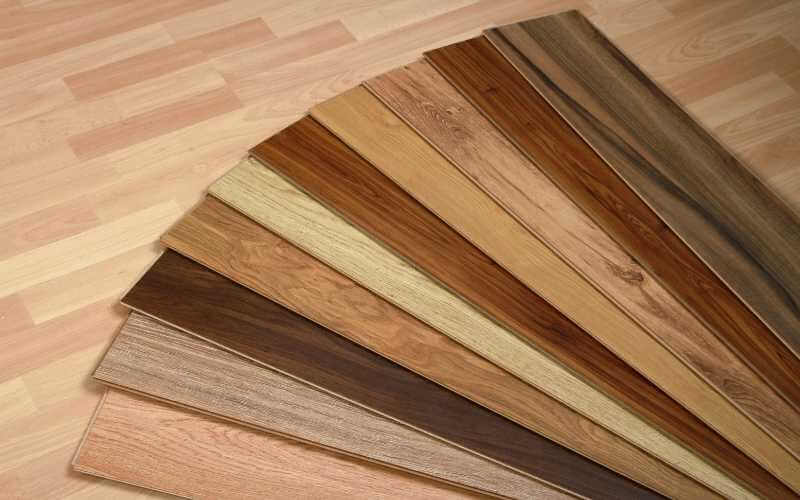Wood floors are instantly recognizable due to their value, durability, and elegance. If you have sparkling wood flooring or have recently uncovered a possible wood floor during a home remodel, you may be curious about the type of wood that lies beneath your living space.
To clean, repair, stain or treat the wood flooring, you must first identify the sort of hardwood beneath your feet. This brings us to the topic, how to tell what type of wood floor you have.
Grain patterns are the most common way to distinguish the many types of wood flooring. You may also need to scrape off the finish of the wood flooring in order to determine the wood beneath it.
This article will provide you with a complete guideline on how to tell what type of wood floor you have. Continue Reading!
Related: What is the most durable hardwood floor
How to Tell What Type of Wood Floor you Have
Table of Contents
Let’s be clear before we start identifying wood flooring. Some artificial composites and plastics can resemble wood to some extent. If you don’t know what you’re searching for, it can get quite confusing.
Below are some tips that will help you tell what type of wood floor you have
1. Wood Grains
The first telltale sign that should help tell you what type of wood floor you have is the wood grains. So, search for wood grains or growth rings.
If they are huge and widely dispersed and keep reoccurring, you may have a composite floor with a wood-like veneer.
Typically, this veneer is shaved from wood and attached to manufactured material. It has the appearance of wood and may fool even the most astute observer.
Nonetheless, because popular hardwoods have an open pore structure, the grains are easily visible and appear natural.
Close curly grains are frequent in hardwoods such as maple. Birch has fewer prominent grains and wider spacing between curls.
2. Scrape Some of the Finish Off
Scrape some of that finish off if you want to be extremely thorough in your investigation. This will help you identify wood flooring more precisely.
When finished with dark paint or stain is used, maple and birch can look very similar. In such a case, you’ll need to remove that stain and make the right identification. Don’t worry; you can always re-stain it afterward.
Start with pressing a fingernail a little more firmly into the finish. If it’s a softwood, such as pine, you’ll see a dent forming. Nonetheless, if it’s hardwood, the finish will be unblemished.
3. Use Internet Bases
There are internet databases where you can locate all of the known wood species as well as information on how to identify wood floors.
The Wood Database, for example, is a great resource for this purpose. There are extensive lists of woods classified by grain direction, grain closeness, color, hardness, and other important characteristics.
Scrape a small bit of your wooden floor from beneath a cabinet or anything and compare it to images from the Wood Database.
4. Sand the Wood
A palm sander can be used to sand a section of the floor. Using sandpaper, remove any excess tile mastic and glue. The sanded area now provides a more accurate portrayal of the wood. Remove all of the glue and compare it to photographs from the Wood Database.
Identifying the Most Popular Types of Hardwood Flooring
Let’s take a look at the most common types of hardwood and how to recognize them.
1. How to Identify Oak Floors
Because of its abundance, affordability, and resilience, oak is a fairly popular choice for wood floors.
Technically, there are two types of oak that you might discover in your home: red oak and white oak.
Red oak is a softer wood with warm tones ranging from pink to red to rich brown colors. Because of its warm tone, red oak is a versatile choice that can complement almost any home design.
Red oak also has a rough and open grain texture, which makes it ideal for rustic dwellings. Its dense grain pattern also helps to conceal dents and other flaws, ensuring that your red oak flooring looks brand new for years to come.
Cooler tones of gray or light brown can be found in white oak. It has a fine grain pattern that complements it, resulting in clean, crisp lines that complement stylish and beautiful house designs. Because of its light hue, white oak also accepts stains and finishes well.
As a result, it is a versatile flooring solution for any home. Furthermore, because of its non-porous structure and closed grain, it is more water-resistant than red oak.
Read: Is my floor Oak or Pine?
3. How to Identify Maple Floors
Solid maple and maple engineered flooring, like white oak, have a lighter natural hue with a fine, delicate texture. On the other hand, maple grain patterns have distinct dark streaks that make them simpler to distinguish visually.
Overall, the light and elegant appearance of maple make it appealing to everyone who appreciates modern homes and styles. This distinguishes it from white oak, which has a more classic and traditional aspect.
On the other hand, maple with a darker stain can look eerily similar to naturally darker woods like walnut. It is crucial to note, however, that maple does not accept stains. If you try staining it, the end product will be blotchy and uneven.
3. How to Identify Walnut Floors
Homeowners and contractors highly value black walnut due to it rich, glossy color. Black walnut adds a warm yet dignified presence to any environment, from dark tans to deep browns, with some unusual purple colors tossed in for good measure.
The grain pattern in American black walnut is even and swirling. While walnut is one of the softest hardwoods, it resists rot and other elements that wear down a floor over time.
Walnut is also more resistant to fading from sunlight than many other dark timbers. As a result, it is great for rooms that receive a lot of natural light during the day.
Furthermore, the closed grain of this wood species lends itself well to staining. However, because of the natural dark color, heavier dyes are excellent for this type of wood.
Related: Difference between vinyl and laminate flooring
3. How to Identify Hickory Floors
Hickory is a wonderful choice for high-traffic or activity-intensity rooms and residences. This wood species is extremely strong, giving it a sturdy and long-lasting option for such structures.
It is significantly less prone to dents, scratches, and other damage caused by pets, children, and the exciting hustle of daily living.
The natural hue of hickory can range from reddish-brown to creamy white. The latter is easily confused with white oak, but its great hardness distinguishes the two.
Furthermore, hickory has a considerable color variety within its planks. When this is combined with the wood’s characteristic character marks, such as huge knots or the rare prominent grain pattern, hickory becomes a distinct species that are pretty straightforward to identify.
Overall, hickory is a daring flooring choice that works wonders for a room even years after installation.
Read: How to tell if floors are engineered hardwood
Conclusion
So, the basic line is that you cannot confuse solid wood flooring for composite flooring. You can identify which is wood and which is not by looking at the grains and patterns.
We hope this post on how to tell what type of wood floor you have is of big help to you.

